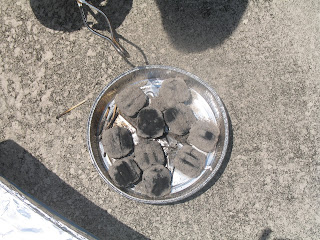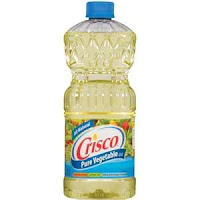Tornadoes and flooding in the past month have brought enormous loss of life and property throughout the United States. More distress is on the way as snow melt begins to accelerate. Since May is National Home Inventory month, is it time to consider why you ought to have one?
Why is a home inventory important?
Natural disasters do happen. Hurricanes, earthquakes, wildfires, tornadoes, tsunamis, volcanoes, and floods destroy property and can cost the lives and health of those in their path. A household inventory will move you to the front of the line when applying for government aid or filing an insurance claim.
Home fires are a fact of life. Many may feel they do not need to worry about a natural disaster, but a home fire can affect anyone. Your chance of experiencing a home fire is 1 in 309. We have several friends who have lost homes, cabins, businesses, or ranches due to fire. One was told they would have one opportunity to submit a list of the items they lost, but if they remembered something else later – “too bad”. Another friend was told they would have to replace their goods with their own money and submit a receipt which would then be reimbursed. Both were nightmares which could have been made easier with a home inventory.
Burglaries in many communities are on the rise. In 2009 there were 2,196,971 burglaries in the United States. As economic times get tougher, thefts become more frequent. We are already hearing of more thefts of gas from parked cars and more muggings for cash. A home inventory will help you identify items which have been taken and will also help the police identify those items if they turn up at a pawn shop or swap meet.
An inventory will help you determine if you have the insurance coverage you really need. As you discover antiques and jewelry you own, you may discover you need separate coverage for those items. You may also discover you can no longer replace your possessions with the coverage you now have. If you live outside of Utah how many insurance agents will believe you have $1,000 in canning supplies or $5,000 worth of food storage - at least I hope you do!
Verify losses when you are filing your tax returns. You can claim a loss even if you do not have receipts or photos to back up your claim. But, if you are audited and cannot prove your claims, that claim may be disallowed.
Discover buried treasure. An inventory is a great way to rediscover those possessions you may have forgotten about. I recently committed to organize my home and simplify. I have been sorting through cupboards and closets and discovered items I had completely forgotten. Some have come out of hiding and are now displayed where I can enjoy them while others are in a pile for a garage sale. I hate garage sales, but I want a new pressure canner, so I am motivated to clear the space!
A home inventory is an important part of estate planning. Some time ago a family member passed away. How I wish there had been an inventory which told us our relatives’ desires for their things. An inventory will remind you of the items you want to pass along and the stories behind those items. This is an important part of family history. Not everyone can possess the pearls your mom wore on her wedding day, but everyone can possess a photo and a copy of the story that makes those pearls important.
Then there is food storage. We all know food storage should not be kept in a hot garage, attic, or shed. As you open up space in better areas, relocate your food storage to cool, dry locations. Maybe you will discover items that you use only once or twice a year. There is no reason for these to be taking up valuable food storage space, when the less-used and less-essential stuff can go out to the garage or up to the attic.
Divorce can happen. None of us like to believe this will happen to us, but what about other family members? I was recently having lunch with a man curious about my new venture into offering third party home inventories. He asked me why anyone would need one and I was explaining that they are priceless in divorce court if a spouse should clean out a home and then claim the items never existed. His eyes got big as he explained he got home from a 16 hour shift and his house was empty.
College students should inventory their possessions. Be sure your children who attend college have an inventory of their things. There is always a parade of friends-of-roommates through student apartments - most are trustworthy, some are not. Student renters need a home inventory in case of fire just as much as the landlord. A landlord's insurance will not cover the renter’s possessions.
Funerals.
Yes, there are thieves out there who love to read obituaries and then burglarize homes while families are at the funeral. Awful, yes, but true. Would you know what was in a family member's home if this happen to you?
How do you conduct a home inventory?
Keep it simple.
Ideally, an inventory would be a list of everything in the house, but realistically most of us will never do that. Food storage, unlike other possessions, is perishable, and as soon as you open the next can of green beans, your inventory is outdated, and needs to be updated. Some hard data once or twice a year can help you to assess the strengths and weaknesses of your food storage, and bring focus to your efforts to acquire, can, and store the things that are most needed.
The simplest way to establish and record your home inventory – at least for insurance purposes – is to get out your video recorder and start rolling. If you do not have a camcorder, then take lots of digital photos.
Now that you are ready, begin. Start in the attic and work your way down. As you proceed open every drawer and take a picture of the contents. Open all closets and take pictures. Be sure to remove the items at the front of the shelf so you can also record the items at the back. Look under every bed and bring everything out to create a record.
Create an inventory chart or spread sheet. You will want a column to record the item, a brief description, serial number, price paid, where it is stored, where receipts and appraisals for those items are kept, and notes for family history. If you are recording your inventory, as you discover family heirlooms make a verbal commentary on the items as you tape them. If you are taking still photos, list items on your inventory sheet so you can write a history later.
Continue your inventory going room to room taking pictures and recording important information. Do not forget the bathroom. You may think a guest bath with no cupboards does not need your attention. Wrong. In the event of a fire, you will need to replace the fixtures, towels, soap dishes, trash cans, and moldings, when you rebuild and you will want those items paid for by the insurance. Take pictures of everything!
I know the garage can be a problem as, unfortunately, this is too often just a storage unit where your car used to sleep. Garages are too often piled high with all kinds of stuff. Be brave and tackle the mess. When you consider the cost of tools and auto supplies, you realize you cannot afford to skip this area.
Don't forget to video your food storage, too. Food is expensive and you want a good record of what you have. Even if you only have a small shelf of food storage, take a good inventory. This will also help in your planning as you accumulate your three month supply.
A video inventory is a great start but a paper record should also be created with thumbnail versions of your photos. This is the form an insurance company will look at and quickly get processed.
In other columns, I have written about the wisdom of choosing a contact person who lives at least seventy miles away as the person who will hold an envelope with copies of your important papers and phone numbers, who is a person you would trust in a crisis to provide you with a place of refuge. Once your inventory is complete, send a copy to this contact. You may also want a copy in a safe deposit box, but be aware that after a community disaster the banks may be closed for several days or weeks. Place a copy in your 72 hour kit. Fireproof safes are wonderful but during a house fire the temperatures will destroy recorded discs and negatives. Always have a backup plan, and that means one or more backups of each important document. An inventory represents your work and property, and you do not want to lose these.
Third party inventories
Third party inventories offer an added degree of protection as you now have a person, completely unrelated to you, who can confirm your inventory is a true representation of what you really owned. An inventory of your own possessions is difficult as you have an emotional attachment. An inventory professional knows what is important to document in detail and when it is sufficient to simply take a photo.
There is still one more thing to do.
A home inventory is never complete. Each week we add to our possessions: there are important mementos from loved ones, a new purchase of food storage, some new clothes as the children grow, and some replacements for items which have worn out. Add these items to your chart or spread sheet and take a picture. Every six months, maybe at General Conference time, update your previous inventory and send a copy to your contact. Inventories need backup, the same as computers need backup.
We do not know the challenges ahead. Well, not exactly. But we have a pretty good idea from prophetic counsel that preparation is overdue, and we must catch up. A home inventory is a great way to assess our situation – to arrive at conclusions, set goals, simplify, verify, and move forward. It is also one of the most valuable things to have in the event of loss due to a major event like a house fire or natural disaster.
For more detailed information about Home Inventories listen to Carolyn's archived radio show: Home Inventory Awareness. Plan to tune in to her radio show every Tuesday night on the Preparedness Radio Network. With question about disaster preparations or any aspect of self reliance contact Carolyn at: Carolyn@TotallyReady.com.




























 This checklist will help you get started on the essentials. (This information is taken from
This checklist will help you get started on the essentials. (This information is taken from 









